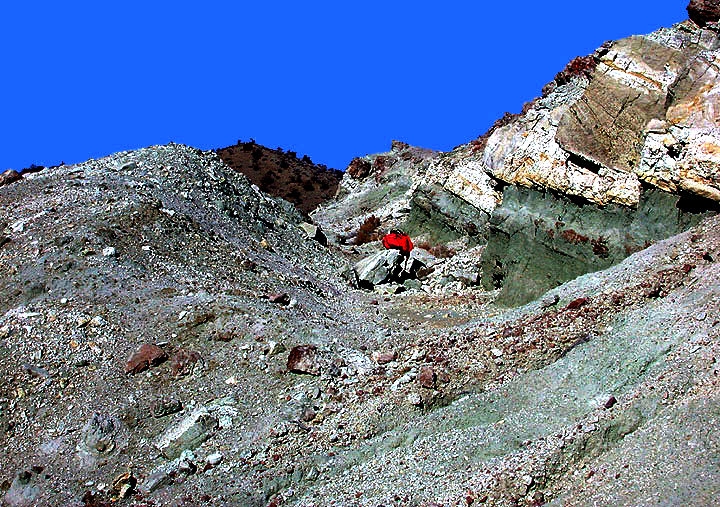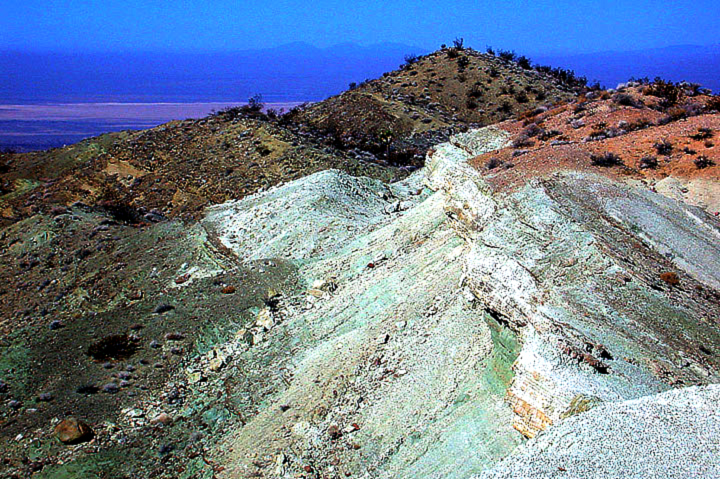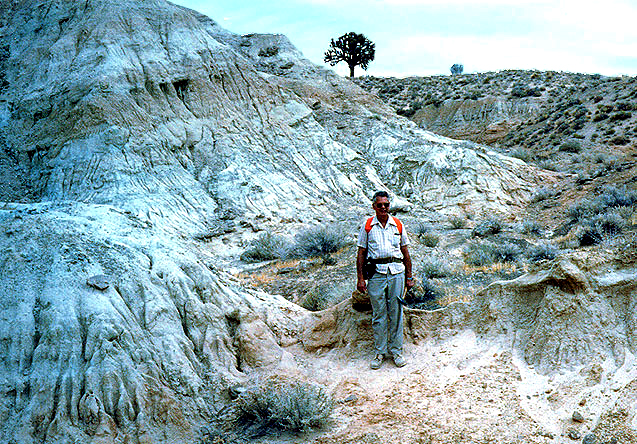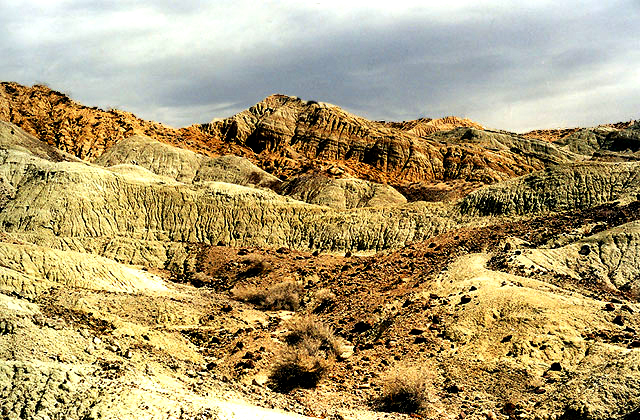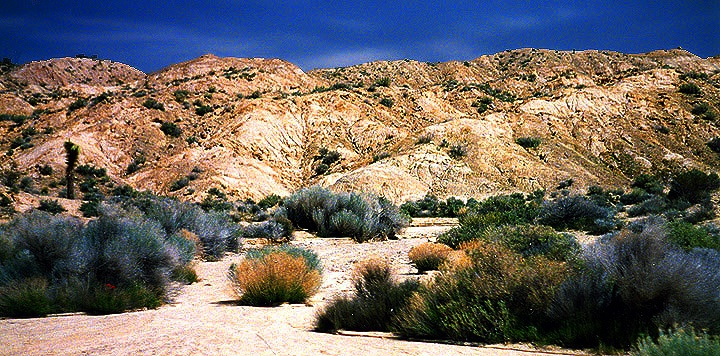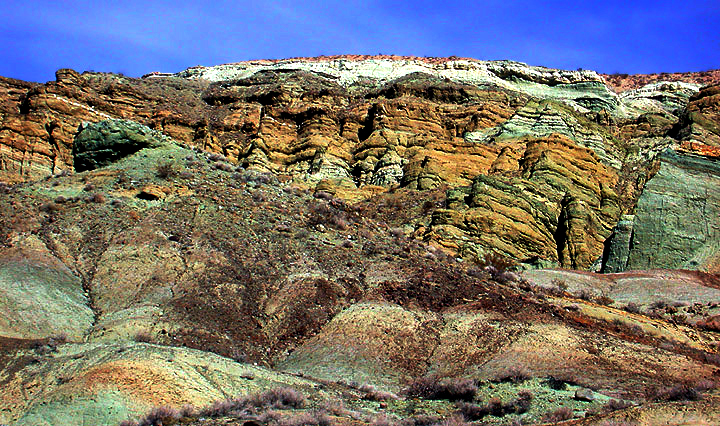
| Here is a distinctive and well exposed geologic section of the middle Miocene Barstow Formation at Fossil Bone Basin. Massive greenish to brown fluviatile (deposited in ancient streams and rivers) sandstones underlie the world-famous white "Skyline Tuff," appropriately enough situated at the skyline--a hardened layer of solidified volcanic ash that erupted from a long-vanished volcano some 15 million years ago. Strata deposited just below the Skyline Tuff (some 15.2 million years) to a point several hundred feet above it (15 to 13.4 million years old) yield the most abundant fossil vertebrate material recovered from the Barstow Formation--a fantastic array of mammals, including camels, horses, pronhorns, oreodonts, gomtherium proboscideans, saber-tooth cats, canids, and numerous varieties of rodents, among many others. It is certainly one of the most fossiliferous bone-bearing, terrestrial geologic rock units in North America--the type locality for the Barstovian Stage of the Miocene Epoch--roughly 16 to 12.5 million years ago. |
